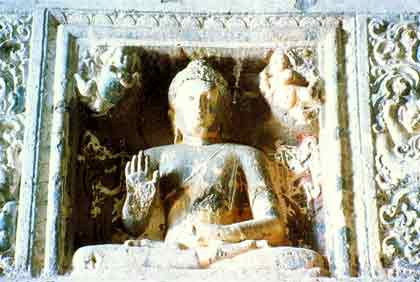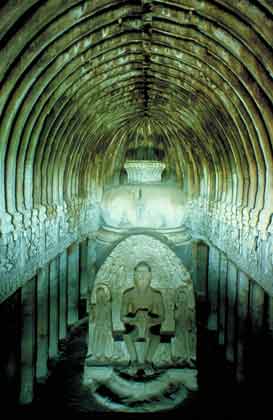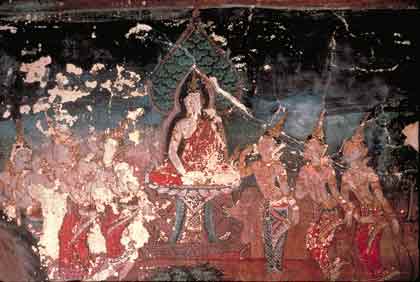Buddhist Fables
- The Story of Ruru Deer
- The Story of Two Swans
- The Hare on The Moon
- The Story of Chaddanta Elephant
- The Story of Great Monkey
- The Story of The Two Deer
- The Story of a Buffalo
- Silava Elephant
- The Wise Monkey
- The Story of the Golden Swan
- The Story of The Great Ape
- The Mighty Fish
- Story of the Monkey King
- Lion and Jackal
- Somdatta
- The Story of the Crows
- The Monkey Brothers
- The Story of Nigrodha Deer
- Kalbahu
- Nandivisala
- Coronation of Owl
- The Feast of the Dead
- The Heart of the Monkey
- The Story of a Rooster
- The Story of a Tigeress
- The Pigeon and The Crow
- The Story of Romaka Pigeon
- The Story of Khardiya Deer
- The Thankless Monkey
- Can A Fool Ever Act Good!
- The Story of a Tortoise
- Jackal –The Arbitrator
- The Story of a Snake Charmer
- The Leather Garment
- The Giant Crab
- Mahilaimukha Elephant
- The Story of Vinilaka
Buddhist Classics
- The Sacrifice of Vessantara
- The Wisdom of Vidhura Pandita
- Chullabodhi – The Conqueror of Anger
- The Story of Kushinagar
- The Virtue of Forbearance
- Matanga – The World’s First Crusader of Untouchability
- The Temptation of Isisanga
- The Flight of Sakka
- Mahajanaka’s Renunciation
- The Wine-Jar
- The Sacrifice of Sivi
- The Box of the Monster
- The Lotus Stalk
- Kandari – The Handsome Prince
- Ghat: The Virtuous King
- Supparaka – The Ancient Mariner
- Sankhapala: The Naga King
- Champeyya
- The Baveru Island
- The Great Gambler
- The Story of The Dumb Prince
- The Naive House-Holder
- The Jewelled Serpent
- The Mango-Thief
- The Foot-Print Reader
- The Story of Sutasoma
- The Story of Sudasa
- The Little Bowman
- The Envoy of Belly
- Story of a Drummer
- The King, Who Knew The Language Of Animals
- The Happy Man
- Sama: The Good Son
Life and Legends of Buddha
- Gotama Buddha
- Birth Story of Gotama
- Maha Maya’s Dream
- Sage Asita’s Visit
- The Four Sights
- Story of Renunciation
- The Buddha’s Victory over Mara
- The Personality of the Buddha
- Nalgiri Elephant
- Story of Kumara Kassapa
- Dhamma-Chakka-Pavattana-Katha
- The Buddha’s Teaching of Abhidhamma
- Buddha's Visit to Rahula Mata
- The Savatthi Miracles
- The Flying Buddha
- Story of Parinibbana
- Suddhodana
- Sujata
- Sariputta
- Moggallana
- Story of Mara
- Bimbisara
- Nanda
- Janapada Kalyani Nanda
- The Spiritual Journey of Janapada Kalyani
- Phussa Buddha
- Vipassi Buddha
- Sikhi Buddha
- Vessabhu Buddha
- Kakusandha Buddha
- Konagamana Buddha
- Kassapa Buddha
- Metteya
The Illustrated Jataka & Other Stories of the Buddha by C. B. Varma Introduction | Glossary | Bibliography
071 – Gotama Buddha (563 – 483 B.C)
B orn of King Suddhodana and his chief consort Maha Maya, Siddhattha Gotama lived in great comfort and luxury in three palaces, namely, Ramma, Suramma and Subha for twenty-nine years in the kingdom of Kapilavatthu (Sanskritised: Kapilavastu) until he resolved to renounce the worldly life.
Before his conception he lived in the Tusita heaven and waited for the most opportune moment to be born on the earth. He was born in the grove of Lumbini, when his mother was on her way to Devadaha to visit her parents under a sal tree on the full moon day of the Visakha month (around May). Sage Asita (Kaladevala) visited him by breaking his meditation in the Himalayas when he heard of his birth from the devas of the Tavatimsa.
 |
 |
Asita was delighted to see the baby Siddhattha as he was destined to be a Buddha; but wept because he was not to live long to hear his discourses. On the fifth day, when the name-giving-ceremony was being celebrated with the participation of one hundred and eight Brahmins: seven of them, namely, Rama, Dhaja, Lakkhana, Manti, Bhoja, Suyama and Sudatta predicted that the baby would either be an emperor of emperors (Chakkavatti); or a Buddha. But Kondanna, the youngest of them had said that the baby would definitely be a Buddha. The baby was given the name Siddhattha.
Seven days after the delivery of Siddhattha, Mahamaya, his mother died. Maha Pajapati, the sister of Mahamaya, who, too, along with Mahamaya was married to Suddhodana on the same day, nurtured him.
When the prince was sixteen years old he summoned an assembly of the Sakiyans and demonstrated various feats of a great warrior. According to the Sarabhanga Jataka he performed twelve feats with a bow, which required the strength of one thousand men to be lifted. Further, according to the legends the Sakiyans were so impressed by his feats that he was offered the hands of forty thousand Sakiyan maidens in marriage. The princess of Suppabuddha, named Bimbaa (who was also called Bhaddakacchaa, Subhaddakaa and Yasodharaa [Sanskrit and Hindi: Yashodhara] and popularly known as Rahulamata [Mother of Rahula]), however, became his chief wife.
At the age of twenty-nine having realised the triviality of the worldly life – particularly after encountering the four sights, viz., the sight of a diseased person; an old man; a dead body; and a recluse – he eventually renounced the worldly life to lead the life of a recluse. Then crossing the three kingdoms of the Sakiyans, Koliyans and Mallas he crossed the river Anoma and cut off his hair and beard. Then he sent his charioteer Channa and his horse Kanthaka back to his father. The horse, however, could not bear the pain of separation from his master and died. Since then Siddhattha wandered from place to place, such as, Anupiya mango grove, Rajgir and so on in quest of the Truth.
In course of his quest, he approached Alara Kalama to learn the methods of spiritual practices to realise the truth. When dissatisfied with the Alara he turned to Uddaka Ramaputta. But he was not satisfied with his doctrine as well.
Later, he went to Senanigama in Uruvela and practised severe penances for six years along with five ascetics, who later became popular as ‘Pancha-vaggiya bhikkhus’. Having realised the folly of extreme austerity he took recourse to normal food. This made the five ascetics desert him and depart to Isipatana Park at Sarnath.
Sujata satisfied the Siddhattha’s desire for the normal food by offering him milk rice in a golden bowl on the full moon day of the Visakha month. That day he bathed in the river Niranjara; ate the food; and left the bowl in the stream, which sank to the abode of the Naga king Kala. He then spent the day in the sal grove. In the evening he came to the Bodhi tree. There Sotthiya, a grass cutter, offered him eight handfuls of grass, which he placed eastward and sat cross-legged on it with a firm resolve to meditate until the attainment of his Enlightenment. Then all the divinities including Maha Brahma appeared there to honour him. But when Mara and his army attacked him; and their sight frightened them they all fled. Only the ten Paramis (or Perfections) like that of charity and righteousness, which he had mastered in various births, stood by him to defeat and rout the forces of Mara. When Gotama emerged victorious by defeating Mara, those devas, who had fled at the sight of Mara, reassembled there to celebrate the victory of the great sage.
Gotama, however, engrossed in meditation remembered his former existences in the first watch of the night; attained the divine eye (dibba chakkhu) in the second watch of night; and realised the Chain of Causation (Paticchasamuppada) in the third watch of night. When he mastered Paticchasamuppada the earth trembled. Finally, at dawn he attained Enlightenment.
He enjoyed the blissful meditation of paticchasamuppada for seven days while sitting under the Bodhi tree. He spent the second week at the foot of the Ajapala Nigrodha tree, where he was accosted by a haughty Brahmin; and defeated the three daughters of Mara, namely, Tanha, Arati and Raga, who took the last chance to dissuade him.
 |
| Gotama and the three daughters of Mara, namely, Tanha, Arati and Raga (bottom right) who took the last chance to dissuade him, the Thai version |
He spent the third week under the hood of the Naga king Muchalinda; and the fourth week under the Rajayatana tree where he converted Tapussa and Bhallika even without imparting any instruction.
He was then approached by Brahma Sahampati to profess his teachings to the world, as there are several receptive minds to appreciate his doctrine, and thereby, set the wheel of the dhamma in motion to uplift the world. The Buddha acceded to the request of Brahma Sahampati. He then walked to Isipatana Migadaya (the Deer Park) at Sarnath to deliver his first sermon to the five select ascetics, popularly known as Panchavaggiya bhikkhus, who happened to be his ascetic companions for six years in Uruvela.
 |
| Gotama among eight Buddhas on the panel of Ajanta. |




